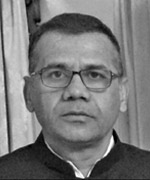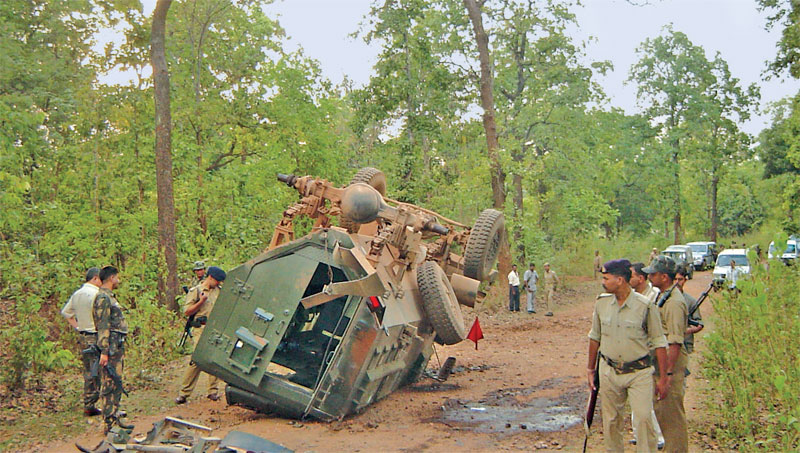The key to successful counter-Maoist operations is intelligence and ground understanding
 R.C. Sharma
R.C. Sharma
From March to June every year, the armed wing of banned Communist Party of India-Maoists, the Peoples Liberation Guerrilla Army (PLGA) observes a period of Tactical Counter Offensive Campaign (TCOC) to finetune tactics through coordinated movement and actions by its military companies and battalions.
The TCOC is also used to activate operational and administrative structures to dominate civil administration and security forces. Local Operating Squads (LOS) and Local Guerrilla Squads (LGS) are integrated in operational coordination. Bal Sangams provide information on activities of security forces. Nataya mandalis garner public support and spread Maoist ideology through aggressive cultural activities.
During this campaign, the PLGA executes surprise ambushes to inflict casualties on the security forces and loot arms and ammunition to dominate and demoralise them. They project government as weak, incapable of looking after the developmental, cultural and social needs of the tribal. They also successfully project security forces as instruments of killing and harassment of the local population. TCOC is a sinister campaign that the government has not been able to counter effectively.
Recent history is replete with incidents of attacks on security forces during TCOC. The Dandakaranya Special Zonal Committee (DSZC) spearhead these attacks. The most gruesome of these was the Chintalnar massacre of 6 April 2010 in which 76 CRPF personnel were killed. More recently, on 3 April 2021, the combined force comprising District Reserve Guards (DRG), Bastariya battalion, Special Task Force (STF), CRPF and COBRA commandos were ambushed. A total of 22 died and 31 were injured. The Maoists took one COBRA commando as hostage. According to the press note issued by the DSZC, four of the PLGA cadre were killed in the encounter.
Needless to say, the CAPF has always given it best in combat despite shortcomings, which are beyond their control. In all operations, field commanders and troops have fought valiantly. The only reason they see limited success is because of impractical and faulty operational plans.
It is time the government and security forces leadership at all levels take a holistic view of PLGA’s strategy and tactics. They also need to analyse how the Maoists are able to dominate the physical and moral narrative during the TCOC as that gives the fillip to its guerrillas. Unless the government is able to wrest the narrative from them, the Maoists would continue to spread their physical and psychological footprints undermining the writ of the state.
Why it is that the security forces suffer major losses every TCOC season? The ensuing physical and mental trauma puts psychological pressure on the troops and executive leadership. It takes long time for a company/ battalion to come out of psychological trauma. The result is operational lethargy, Naxal domination and trust deficit in the battalion’s leadership, even though it has little say in operational planning.
Summer TCOC
The biggest determinant of the TCOC is the weather. The summer conditions favour the Maoists and impose caution upon security forces. In the DSZC’s area of responsibility, March to June is a period of extreme heat and dryness. Day temperatures touches 45 degree C, and sometimes even that is breached. The visibility afforded by dry weather, enhances observation. The dry surface increases speed and mobility of the ultras and the rivers/ nullahs remain fordable thus increasing the radius of their operations. Furthermore, dry leaves on the ground provide advance warning of the approaching forces, giving enough time to the ultras to discern the number of troops and strike.
In addition, Tendu patta katai (leaf-cutting) also called boota katai takes place during this period. The civilian population engaged in this activity is exploited for intelligence gathering and for providing administrative support to the Maoists during and after any operation. Thereafter, monsoon commences, adding humidity to the heat. Between June and September, the ground becomes slushy and water crossings unfordable. This is the time the Maoists lie low.
These are unchanging facts of the Dandakaranya region. The officialdom which plans the counter-Maoists operations should consider these ground realities while planning operations. They need to ask themselves whether their plan is executable in the given circumstances or not? They must take into account the level of acclimatisation of the Maoists and the security forces, which determines fitness, speed, field craft, motivation, fire and movement. The security forces operate with the heavy load of bullet-proof jackets and helmets making long distance patrols physically and mentally exhausting. It degrades their fighting capability. Furthermore, exhaustion drastically reduces marching speed, and alertness is lowered. The requirement of drinking water multiplies thereby increasing the dependency of the troops on local hand pumps and population. Anyone who has served in these areas would understand the criticality of these issues.

You must be logged in to view this content.

